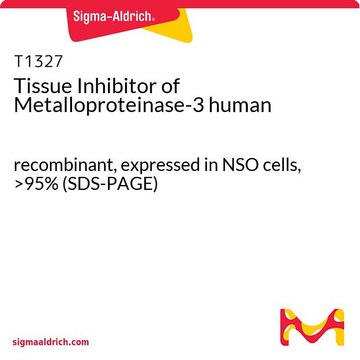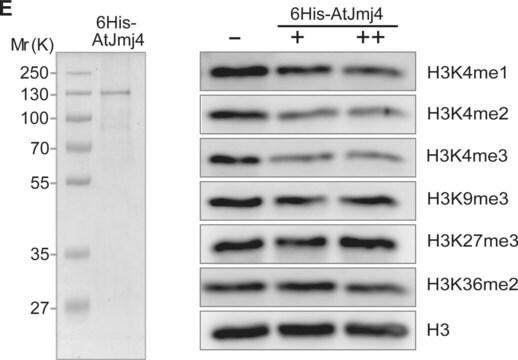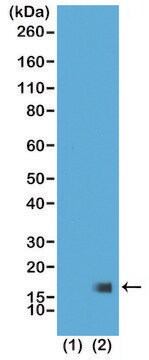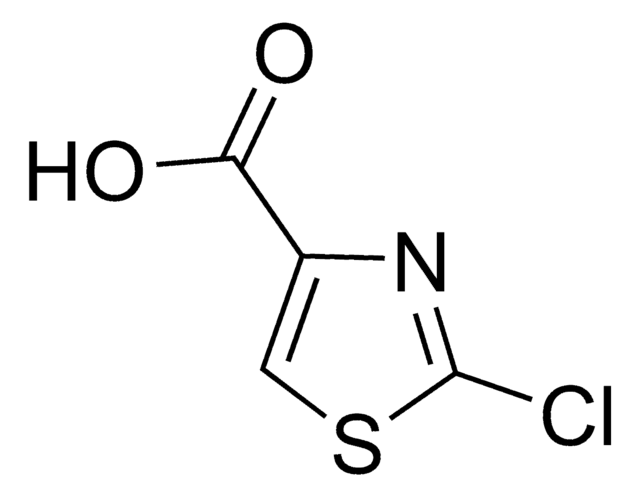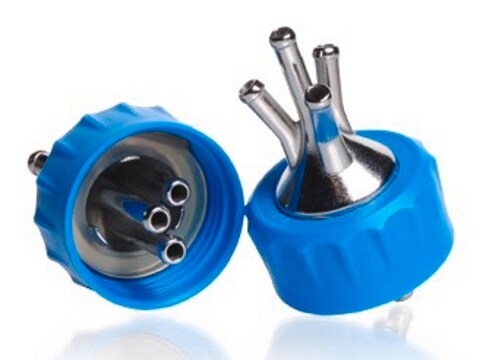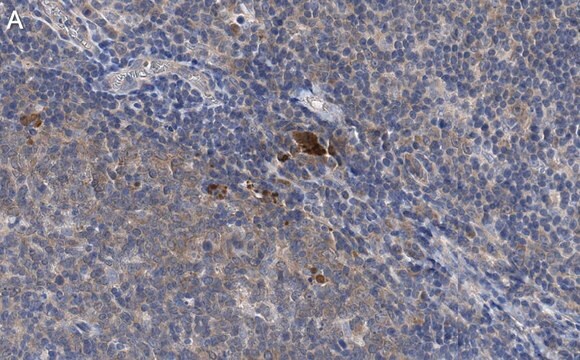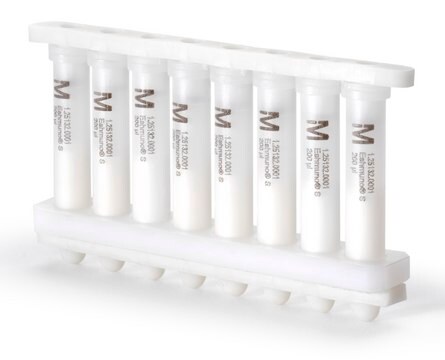MABE636
Anti-monomethyl Histone H3 (Lys4) Antibody, clone RM140
clone RM140, from rabbit
Synonym(e):
Histone H3.3, Histone H3
About This Item
Empfohlene Produkte
Biologische Quelle
rabbit
Qualitätsniveau
Antikörper-Produkttyp
primary antibodies
Klon
RM140, monoclonal
Speziesreaktivität
human
Methode(n)
multiplexing: suitable
western blot: suitable
Isotyp
IgG
UniProt-Hinterlegungsnummer
Versandbedingung
wet ice
Posttranslationale Modifikation Target
monomethylation (Lys4)
Angaben zum Gen
human ... H3F3B(3021)
Allgemeine Beschreibung
Spezifität
Immunogen
Anwendung
Epigenetik & nukleäre Funktionen
Histon-modifizierende Proteine
Qualität
Western Blotting Analysis (WB): 0.5 μg/mL of this antibody detected monomethyl Histone H3 (Lys4) in HeLa acid extract.
Zielbeschreibung
Physikalische Form
Lagerung und Haltbarkeit
Note: Variability in freezer temperatures below -20°C may cause glycerol containing solutions to become frozen during storage.
Sonstige Hinweise
Haftungsausschluss
Sie haben nicht das passende Produkt gefunden?
Probieren Sie unser Produkt-Auswahlhilfe. aus.
Lagerklassenschlüssel
12 - Non Combustible Liquids
WGK
WGK 2
Flammpunkt (°F)
Not applicable
Flammpunkt (°C)
Not applicable
Analysenzertifikate (COA)
Suchen Sie nach Analysenzertifikate (COA), indem Sie die Lot-/Chargennummer des Produkts eingeben. Lot- und Chargennummern sind auf dem Produktetikett hinter den Wörtern ‘Lot’ oder ‘Batch’ (Lot oder Charge) zu finden.
Besitzen Sie dieses Produkt bereits?
In der Dokumentenbibliothek finden Sie die Dokumentation zu den Produkten, die Sie kürzlich erworben haben.
Unser Team von Wissenschaftlern verfügt über Erfahrung in allen Forschungsbereichen einschließlich Life Science, Materialwissenschaften, chemischer Synthese, Chromatographie, Analytik und vielen mehr..
Setzen Sie sich mit dem technischen Dienst in Verbindung.